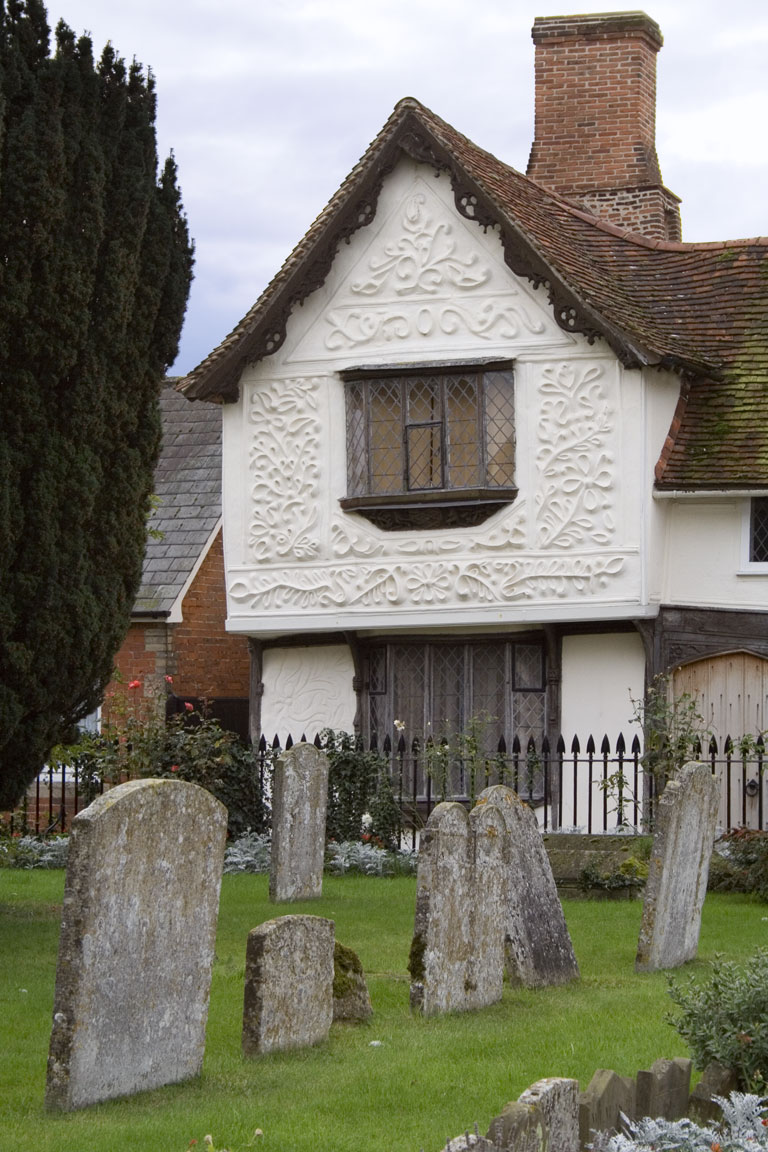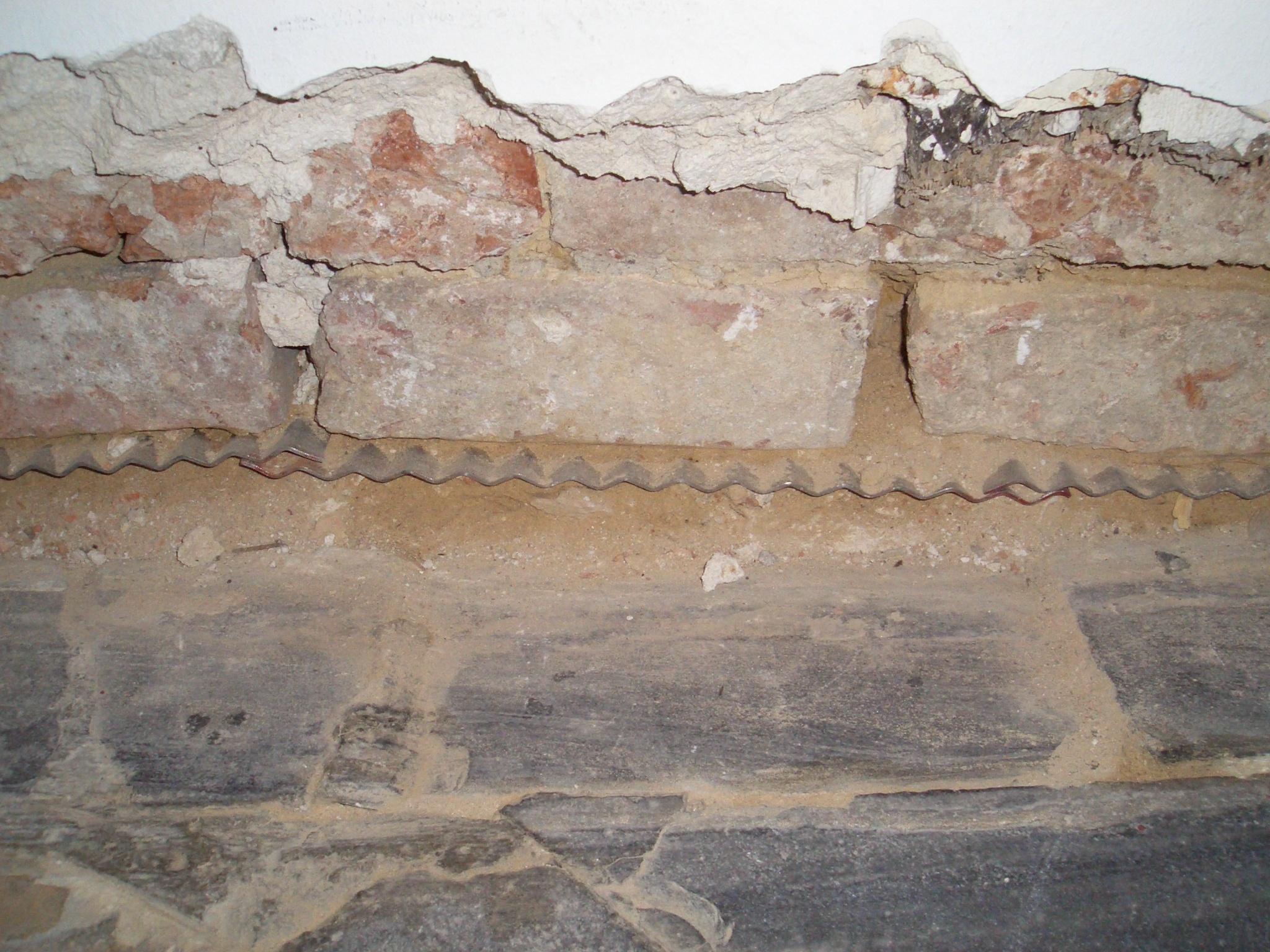|
Parge Coat
A parge coat is a thin coat of a cementitious or polymeric mortar applied to concrete or masonry for refinement of the surface. Pargeting is a more involved process, involving designs in relief created in the surface. Parging is usually applied with a trowel and pressed into the existing surface. The intent is to create a contiguous surface by filling imperfections such as surface air voids created by bughole-induced outgassing, to level a surface for aesthetic reasons, or to prepare a surface for topcoating with an additional form of protective coating. Parging is a low-cost alternative to repointing, providing structural cohesiveness to masonry walls whose mortar has begun to fail. Parge coating can also be used to create air tightness for apartments. See also *Damp proofing Damp proofing in construction is a type of moisture control applied to building walls and floors to prevent moisture from passing into the interior spaces. Dampness problems are among the most freq ... [...More Info...] [...Related Items...] OR: [Wikipedia] [Google] [Baidu] |
Cementitious
A cement is a binder, a chemical substance used for construction that sets, hardens, and adheres to other materials to bind them together. Cement is seldom used on its own, but rather to bind sand and gravel ( aggregate) together. Cement mixed with fine aggregate produces mortar for masonry, or with sand and gravel, produces concrete. Concrete is the most widely used material in existence and is behind only water as the planet's most-consumed resource. Cements used in construction are usually inorganic, often lime or calcium silicate based, which can be characterized as hydraulic or the less common non-hydraulic, depending on the ability of the cement to set in the presence of water (see hydraulic and non-hydraulic lime plaster). Hydraulic cements (e.g., Portland cement) set and become adhesive through a chemical reaction between the dry ingredients and water. The chemical reaction results in mineral hydrates that are not very water-soluble and so are quite durable in ... [...More Info...] [...Related Items...] OR: [Wikipedia] [Google] [Baidu] |
Polymer
A polymer (; Greek '' poly-'', "many" + ''-mer'', "part") is a substance or material consisting of very large molecules called macromolecules, composed of many repeating subunits. Due to their broad spectrum of properties, both synthetic and natural polymers play essential and ubiquitous roles in everyday life. Polymers range from familiar synthetic plastics such as polystyrene to natural biopolymers such as DNA and proteins that are fundamental to biological structure and function. Polymers, both natural and synthetic, are created via polymerization of many small molecules, known as monomers. Their consequently large molecular mass, relative to small molecule compounds, produces unique physical properties including toughness, high elasticity, viscoelasticity, and a tendency to form amorphous and semicrystalline structures rather than crystals. The term "polymer" derives from the Greek word πολύς (''polus'', meaning "many, much") and μέρος (''meros'' ... [...More Info...] [...Related Items...] OR: [Wikipedia] [Google] [Baidu] |
Mortar (masonry)
Mortar is a workable paste which hardens to bind building blocks such as stones, bricks, and concrete masonry units, to fill and seal the irregular gaps between them, spread the weight of them evenly, and sometimes to add decorative colors or patterns to masonry walls. In its broadest sense, mortar includes pitch, asphalt, and soft mud or clay, as those used between mud bricks, as well as cement mortar. The word "mortar" comes from Old French ''mortier'', "builder's mortar, plaster; bowl for mixing." (13c.). Cement mortar becomes hard when it cures, resulting in a rigid aggregate structure; however, the mortar functions as a weaker component than the building blocks and serves as the sacrificial element in the masonry, because mortar is easier and less expensive to repair than the building blocks. Bricklayers typically make mortars using a mixture of sand, a binder, and water. The most common binder since the early 20th century is Portland cement, but the ancient binder lim ... [...More Info...] [...Related Items...] OR: [Wikipedia] [Google] [Baidu] |
Pargeting
Pargeting (or sometimes pargetting) is a decorative or waterproofing plastering applied to building walls. The term, if not the practice, is particularly associated with the English counties of Suffolk and Essex. In the neighbouring county of Norfolk the term "pinking" is used. Patrick Leigh Fermor describes similar decorations on pre-World War II buildings in Linz, Austria. "Pargeted façades rose up, painted chocolate, green, purple, cream and blue. They were adorned with medallions in high relief and the stone and plaster scroll-work gave them a feeling of motion and flow." Pargeting derives from the word 'parget', a Middle English term that is probably derived from the Old French ''pargeter'' or ''parjeter'', to throw about, or ''porgeter'', to roughcast a wall.''Webster's Dictionary''. However, the term is more usually applied only to the decoration in relief of the plastering between the studwork on the outside of half-timber houses, or sometimes covering the whole wall. ... [...More Info...] [...Related Items...] OR: [Wikipedia] [Google] [Baidu] |
Bughole
A bughole (or pinhole) is a small hole in the surface of a concrete structure caused by the expansion and eventual outgassing Outgassing (sometimes called offgassing, particularly when in reference to indoor air quality) is the release of a gas that was dissolved, trapped, frozen, or absorbed in some material. Outgassing can include sublimation and evaporation (which ... of trapped pockets of air in setting concrete. Bugholes are undesirable, as they may compromise the structural integrity of concrete emplacements. Bughole-induced outgassing is a phenomenon occurring when applying a protective coating (or lining) to concrete (predominantly vertically cast-in-place) where air becomes trapped within bughole cavities and releases into or through the protective coating, thereby causing pinholes and holidays in the coating film. References Concrete {{Civil-engineering-stub ... [...More Info...] [...Related Items...] OR: [Wikipedia] [Google] [Baidu] |
Outgassing
Outgassing (sometimes called offgassing, particularly when in reference to indoor air quality) is the release of a gas that was dissolved, trapped, frozen, or absorbed in some material. Outgassing can include sublimation and evaporation (which are phase transitions of a substance into a gas), as well as desorption, seepage from cracks or internal volumes, and gaseous products of slow chemical reactions. Boiling is generally thought of as a separate phenomenon from outgassing because it consists of a phase transition of a liquid into a vapor of the same substance. In a vacuum Outgassing is a challenge to creating and maintaining clean high-vacuum environments. NASA and ESA maintain lists of materials with low-outgassing properties suitable for use in spacecraft, as outgassing products can condense onto optical elements, thermal radiators, or solar cells and obscure them. Materials not normally considered absorbent can release enough lightweight molecules to interfere with industr ... [...More Info...] [...Related Items...] OR: [Wikipedia] [Google] [Baidu] |
Surface Roughness
Surface roughness, often shortened to roughness, is a component of surface finish (surface texture). It is quantified by the deviations in the direction of the normal vector of a real surface from its ideal form. If these deviations are large, the surface is rough; if they are small, the surface is smooth. In surface metrology, roughness is typically considered to be the high-frequency, short-wavelength component of a measured surface. However, in practice it is often necessary to know both the amplitude and frequency to ensure that a surface is fit for a purpose. Roughness plays an important role in determining how a real object will interact with its environment. In tribology, rough surfaces usually wear more quickly and have higher friction coefficients than smooth surfaces. Roughness is often a good predictor of the performance of a mechanical component, since irregularities on the surface may form nucleation sites for cracks or corrosion. On the other hand, roughness may pr ... [...More Info...] [...Related Items...] OR: [Wikipedia] [Google] [Baidu] |
Coating
A coating is a covering that is applied to the surface of an object, usually referred to as the Substrate (materials science), substrate. The purpose of applying the coating may be decorative, functional, or both. Coatings may be applied as liquids, gases or solids e.g. Powder coatings. Paints and lacquers are coatings that mostly have dual uses of protecting the substrate and being decorative, although some artists paints are only for decoration, and the paint on large industrial pipes is for preventing corrosion and identification e.g. blue for process water, red for fire-fighting control etc. Functional coatings may be applied to change the surface properties of the substrate, such as adhesion, Wetting, wettability, corrosion resistance, or wear resistance. In other cases, e.g. semiconductor device fabrication (where the substrate is a wafer (electronics), wafer), the coating adds a completely new property, such as a magnetic response or electrical conductivity, and forms an e ... [...More Info...] [...Related Items...] OR: [Wikipedia] [Google] [Baidu] |
Repointing
Repointing is the process of renewing the pointing, which is the external part of mortar joints, in masonry construction. Over time, weathering and decay cause voids in the joints between masonry units, usually in bricks, allowing the undesirable entrance of water. Water entering through these voids can cause significant damage through frost weathering and from salt dissolution and deposition. Repointing is also called pointing,"pointing, vbl. n 1. " def. 5 ''Oxford English Dictionary'' Second Edition on CD-ROM (v. 4.0) © Oxford University Press 2009 or pointing up, although these terms more properly refer to the finishing step in new construction. History Traditionally, mortar was made with lime and sand, producing lime putty. In the early 20th century, masons began using Portland cement, a strong, fast drying cement. Masonry cement made its appearance in the 1930s, which is a combination of Portland cement and ground limestone. Repointing process Examining the structure ... [...More Info...] [...Related Items...] OR: [Wikipedia] [Google] [Baidu] |
Damp Proofing
Damp proofing in construction is a type of moisture control applied to building walls and floors to prevent moisture from passing into the interior spaces. Dampness problems are among the most frequent problems encountered in residences. ''Damp proofing'' is defined by the American Society for Testing and Materials (ASTM) as a material that resists the passage of water with no hydrostatic pressure. ''Waterproof'' is defined by the ASTM as a treatment that resists the passage of water under pressure.Greenlaw, Bruce. "Moisture-Proofing New Basements", ''Foundations and concrete work''. Newtown, Connecticut: Taunton Press, 2003. 93. Print. Generally, damp proofing keeps moisture out of a building, where vapor barriers keep interior moisture from getting into walls. Moisture resistance is not necessarily absolute; it is usually defined by a specific test method, limits, and engineering tolerances. Methods Damp proofing is accomplished several ways including all : * A damp-proof cou ... [...More Info...] [...Related Items...] OR: [Wikipedia] [Google] [Baidu] |






